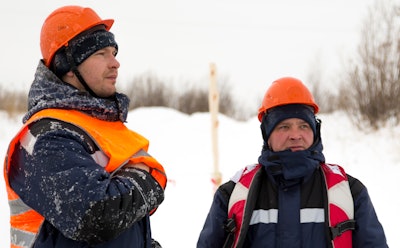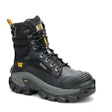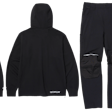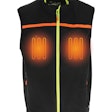
Working in cold environments calls for the best material for insulated construction jackets. Key findings in a study done by Icewear on fabrics that retain heat in the cold weather show that compared to cotton and polyester, the warmest material is wool, with thicker Icelandic wool being even better, and a wool-acrylic blend being somewhere in the middle.
The study was done in conjunction with a mechanical engineer specializing in energy and heat analyzing the different co-efficient of thermal conductivity of a range of clothing items and their materials to see how easily heat passes through them.
While Icelandic wool and regular wool will scientifically keep a person the warmest, staying warm depends on the thickness of the materials and how clothes are layered.
Wool vs. Cotton
In examining wool versus cotton, Orvis looked at both wool and cotton as natural fibers with four-season versatility. Wool emerged as ‘one of nature’s standout insulators’ in cold weather and even in wet conditions, although wool is weaker when wet and is considered more costly. Additionally, cotton is considered a stronger fabric, but it is noted that the overall strength of a fabric depends not just what it is made of, but how it’s made.
Noting that wool has been a prized textile since humans first spun the fibers of sheep’s wool into yarn in ancient Mesopotamia, the case for wearing it touches upon several factors, including durability, resilience and insulating in that wool fibers form tiny air pockets that trap heat, retaining the body’s warmth for comfort when the temperature drops.
Instead of trapping moisture as cotton does, wool wicks moisture and moves it through the fabric. When wearing wool as a base layer, moisture isn’t trapped next to the skin – crucial for keeping warm in cold weather.
The wicking process also keeps the person wearing it cool by facilitating evaporation, which cools the skin’s surface. In addition to helping maintain a comfortable body temperature, the wicking process that keeps the person wearing it and the fabric dry also prevents the buildup of bacteria that create body odor. Merino wool in particular wicks away sweat, helping to keep the wearer cool.
Wool is water-resistant. It can absorb up to 30 percent of its weight in water, yet still retains 80 percent of its insulating property when wet, making it ideal for cold, wet climates. Even when wool is wet, it will quickly dry off on the outside, and feel dry to the touch, because the water is only held inside the fiber.
The argument for cotton is that it is soft, versatile, and breathable, although in cold weather, the scales tip to wool.
Types of Wool for Construction Jackets
While wool can be too itchy for some to wear, it’s the quality that makes a difference, with some wool such as merino and cashmere being noted for their softness. Itchiness also can result from the individual wearer’s skin sensitivity, the age of the wearer (younger people tend to be more sensitive than older), the temperature, and moisture on the skin. To mitigate that, a person can try wearing a soft base layer in a synthetic blend under the wool garment.
The WeatherWool company makes the point about wool’s durability, a valued factor on construction sites. A single woolen fiber features 13 high-level structures and can handle water and fire better than alternative fibers and fabrics.
Wool does not melt, and although it does burn, it is comparatively flame-retardant and if ignited, it usually has a low burning rate and may self-extinguish.
A person who works hard generates excess heat that is in part dissipated by evaporating water vapor (sweating). Some of this water vapor infiltrates the wool and when inside the fiber, the vapor condenses into liquid, releasing heat and warming the air around the wearer.
That wool is warm even when wet is noticeable when going out on a cold, humid day when the woolen outerwear prevents the humidity of the air from chilling the body. The wool will dry the air near the body, creating a lower-humidity, warm micro-environment. Wet (high humidity) air pulls heat from the body much more quickly than dry air.
This is important in cold weather, where heat and energy must be conserved.















